A couple of weeks ago, I came across a viral tweet from journalist and cartoonist Gabrielle Drolet detailing how she had downloaded an app on her phone that opened her front camera every time she went to look at TikTok. Drolet described this function, intended as a deterrent to mindless scrolling, as “so violent.” Her evidence of the brutality was a screenshot of a blurred photo of her, somewhat disheveled, hair unkempt, eating a treat that resembled a cookie. Violent, indeed, from her perspective, but also deeply relatable—it’s not as if I open TikTok because I’m choosing to be a participant in society. No, I click it when I’m at my most indulgent, my most bored, my most eating-brownies-in-my-pajamas-for-breakfast.
Ironically, I found, when I looked into this further, that this “violent” app, One Sec, actually promotes a more peaceful method of getting yourself to log off (or, rather, not log on). Of course, there are other anti-distraction mobile apps out there, like AppBlock; Freedom, a multidevice website-blocking app; and RescueTime, a blocker and time tracker. One Sec’s uniqueness lies in the fact that, in the app’s most basic form, it adds a time delay and suggests you take a deep breath before opening a specific app. Then it asks if you really want to spend the next few hours watching a stream of funny videos interrupted every five minutes by ads.
Deep breaths, intention—that’s all great. But even though mindfulness seems to be the marketing ploy, the camera feature Drolet encountered proved to me that One Sec at the very least flirts with savagery. There is only one actual emotional lever an app that shows you what you look like when logging in is trying to pull, and it’s shame.
I’d like to think I have a healthier relationship with social media than I used to, but fresh off an Instagram-ad purchase of a backless bra that is really supposed to work, really, I still feel like a pawn in Big Tech’s algorithmic game. I wanted to know if shattering my vanity was the sole thing that I needed to do to wean myself off these tempting time killers. So, I picked up my Android phone, prayed that the One Sec app existed for non–Apple users (it does, but in beta), hit download, and waited for boredom to overcome me.
I ran into some issues right off the bat: The first, as far as I could tell—though no amount of searching and reading made me sure—is that One Sec’s beta app for Android doesn’t have the feature that opens the front camera. No matter! With some voracious Googling, I learned how to configure a task-automating app to make it so that when One Sec is triggered, my front camera opens and takes a photo. (While writing this post, I contacted One Sec’s support team to see if there was an easier way to do this that I had missed, but I didn’t hear back by publication time.) Then, I went into One Sec and told it which apps I wanted it to roadblock for me—to start, Instagram, TikTok, X (Twitter), and the New York Times Games app. In order to have One Sec interact with multiple apps, you have to pay for a premium subscription, so (for science!) I begrudgingly handed over my $3 for the month and got to work.
The first tiny square I clicked on to try the new setup was Instagram, with the resulting photo evidenced below. In the grand scheme of things, what I saw staring back at me wasn’t horrendous, but, dear reader, it was offensive. Not because of my face, of course, but because of One Sec’s most cringey trait: It shows you the non-mirror-image version of yourself. Blegh. Naturally, this is a disclaimer that the photos you see here have been mirrored in post because I already know that my face is slightly lopsided (like most everyone’s), and I don’t need the proof lingering around on Al Gore’s internet for posterity. (Also, this is a blanket caveat that what I experienced on the beta version of this app for Android may not be how it works on Apple devices.)
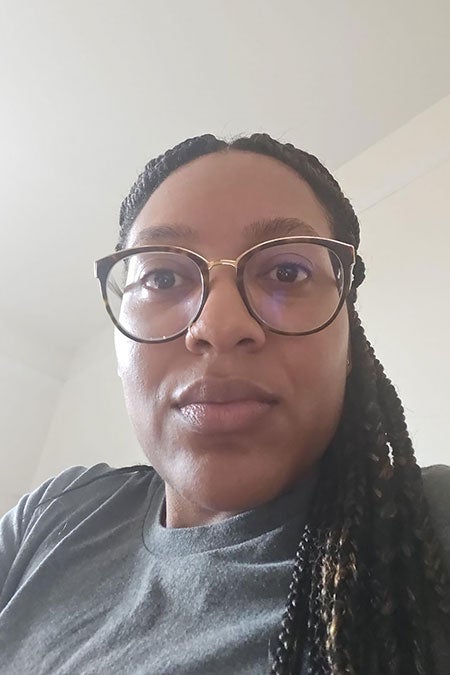
There was another downside to my experience: Unlike with Drolet’s perfectly savage example from X, my app did not feature an overlay of words on the photo displaying (read: chastening me for) how many times I had opened an app in the past 24 hours. Instead, when I went to, say, solve the day’s Wordle, my phone would open the front camera, snap a pic, display a pop-up that told me how many times I had tried to open NYT Games, then ask me if I wanted to continue.
Instagram was the first app I disabled on One Sec, after I reached 12 opens in one day. That sounds like a lot, but in my defense, I DM my friends quite a bit across both Instagram and Twitter. Though the message checking does lead to mindless scrolling, it is imperative that I see whatever meme or Knives Out cast member announcement my friends have sent me.
But after I decided to allow myself unlimited Instagram, One Sec was still slowing me down when it came to Twitter, TikTok, and puzzles. The first few times my front camera was triggered to open, I mainly saw myself from the (nonmirrored) hideous double-chin lower angle, mostly looking confused. What about, I couldn’t quite say. It dawned on me that while some have resting bitch face, I must have resting “WTF?” face.
My most “WTF?” face happened on my third time jump-starting NYT Games. After solving Wordle the first open and taking an initial crack at Connections on the second, I came back to finish the job. (I did, in fact, manage to immediately identify TABLECLOTH, PITCHER, SKULL, and FRUIT as classic still-life iconography. Yes, I sincerely wish I were cooler than that.)
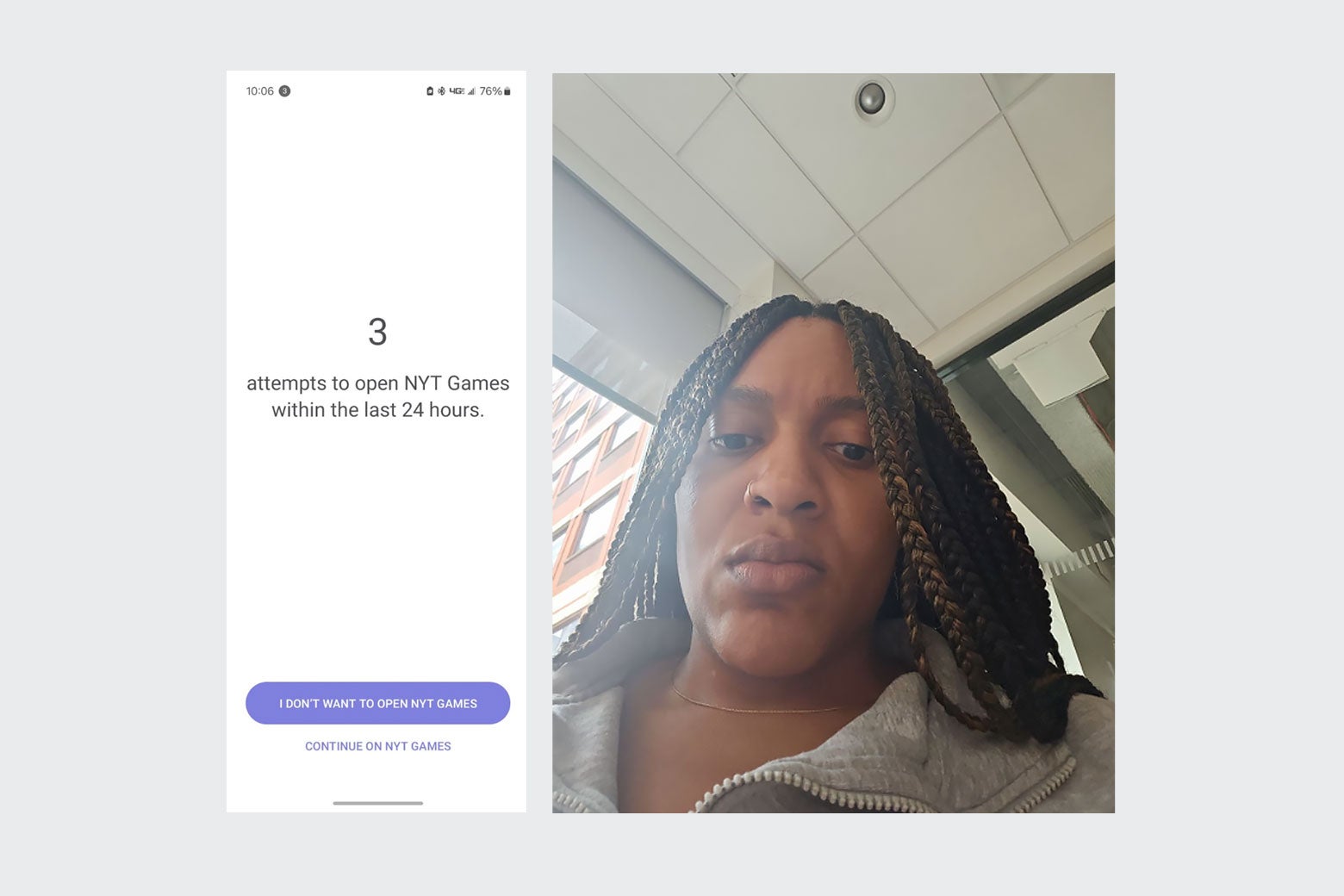
Soon after, I deactivated Twitter from One Sec after I was annoyingly paused a whopping number of times while trying to see the many late-breaking Challengers fan edits and funny movie-related tweets my closest friends had sent me that day. Pictured here: my seventh open of the day. Don’t I look as if I can’t believe that this annoying hellscape is my life?
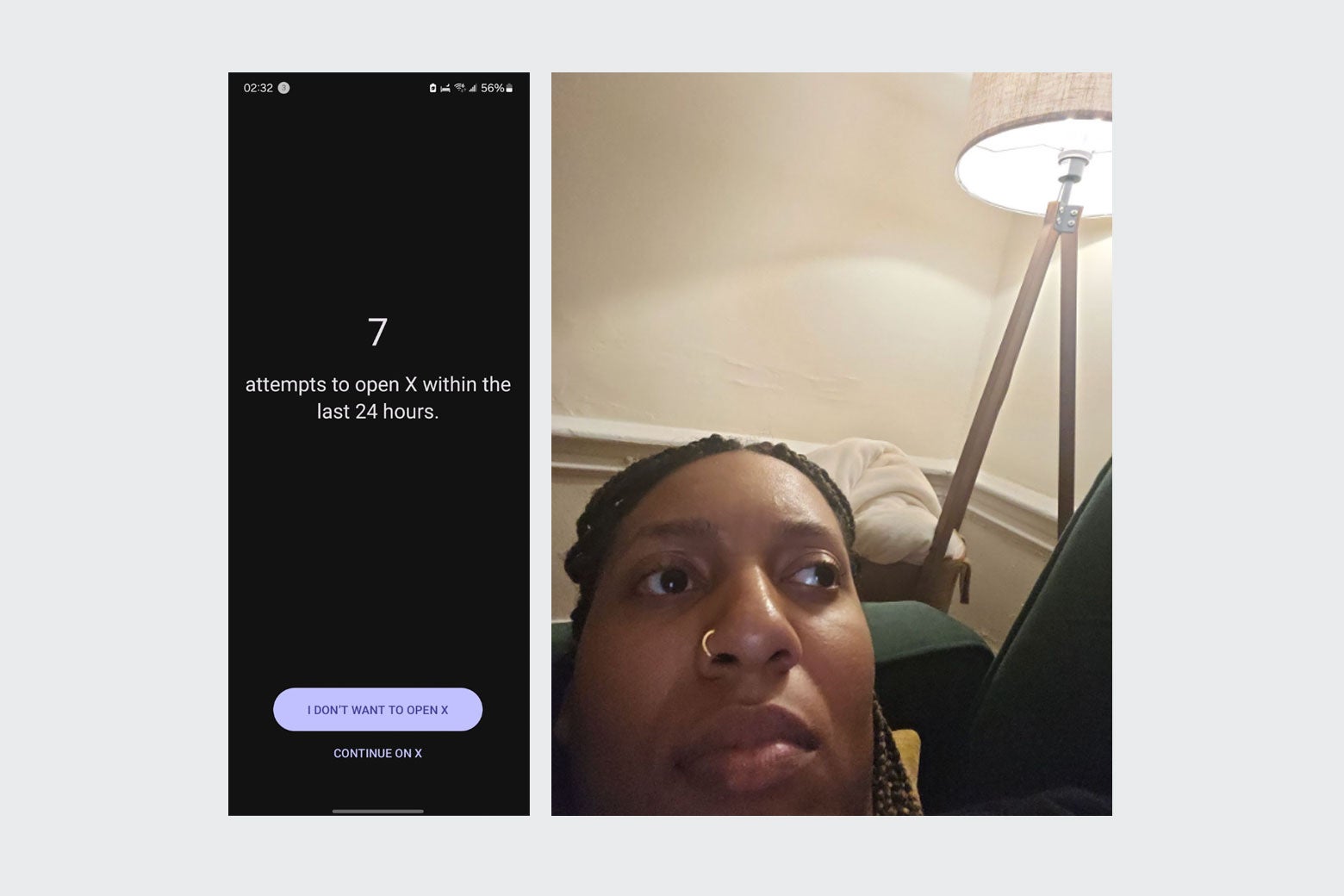
I quickly configured One Sec to have it track only TikTok from then on. My TikTok consumption has greatly improved, and by that I mean lessened, since quarantine. Nowadays, I go on occasionally to sift through the videos my friends have sent me. Inbox TikTok is the supreme TikTok interaction—it’s like having your own curated scrolling experience with content you are sure to like. But having just returned from vacation, I had over 300 TikToks waiting for me across my inboxes. I had my work cut out for me this weekend.
This, perhaps the most unflattering but hilarious photo of me taken during this time, was me opening the “clock app” (as the kids call it) while rubbing the morning sleep from my eyes.
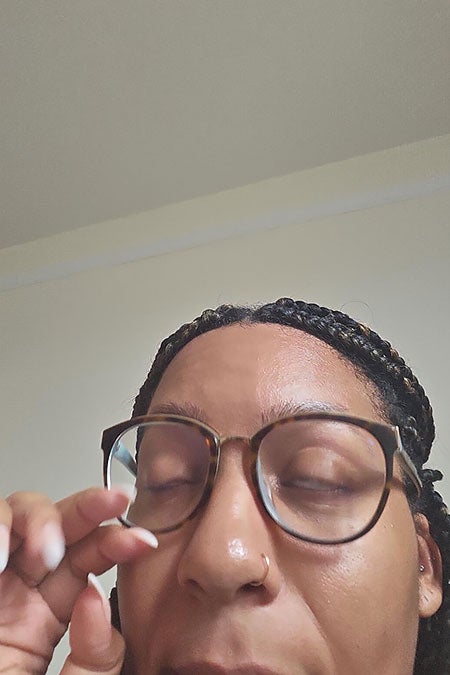
And me then going out to meet someone in the city, still trying to dwindle my reserve of ’Toks.
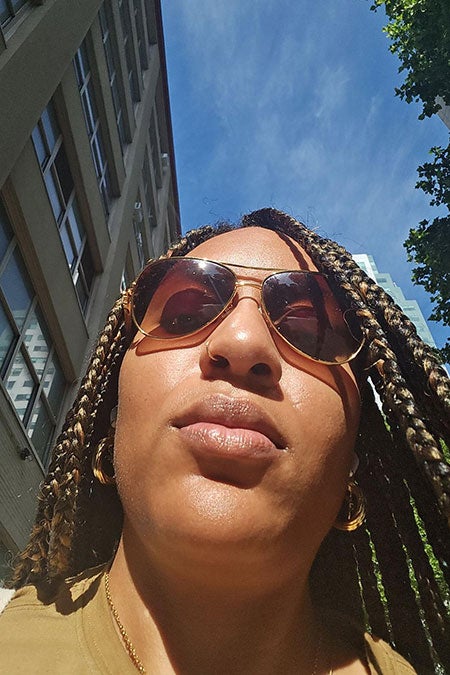
Why was I so bad at keeping One Sec on my apps? My resolve waned quite early when I encountered one of the app’s most useful, and thus annoying, effects, which is that even if you click out of an app briefly to, say, text someone, it registers you going back in as opening the app all over again. I guess that’s part of the lesson? But it’s annoying. Having learned about this wrinkle early on in my One Sec journey, I tried to focus only on TikTok while I was on it. Usually, I flip-flop around in a pattern that might look something like this: checking Instagram, texting my mom about that one thing I keep forgetting to ask, bopping back to Instagram, hearing a song I like, looking it up on Spotify, Googling the artist, clicking on the Instagram profile that comes up as a Google result, which brings me back to scrolling through Instagram. One Sec, with or without the camera function I added, interrupted this flow. I captured the moment I realized I messed up by exiting TikTok to text a video to someone and had to “take a deep breath” and snap a photo before continuing.
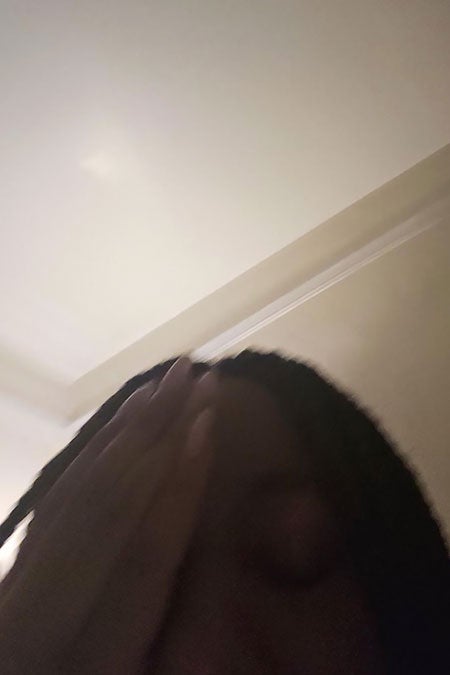
As I made my way through my social media backlog throughout the weekend, I noticed that I started expecting the photo op, and even began posing (still unflatteringly) for the impending reveal of myself.

And just like that, the magic of the embarrassing self–jump scare was squelched by the one thing it was trying to hack: my own vanity.
Though One Sec was still effective as a pop-up that requires you to do a bit more than just press a button to dismiss it, I was surprised by my readiness to adapt to my own fail-safes. When I first saw Drolet’s tweet, I thought that the idea of the camera function was incredibly smart. Yet it took less than three days of One Sec use for me to begin to anticipate the camera launch every time I opened TikTok, and to start treating it as a reward instead of a punishment. Maybe I adapted because society primes us to be camera-ready at all times, or because I’m vain, or because nothing was going to stop me from accessing the apps I wanted to access—not even the ghastly sight of myself. Or maybe it’s just that there’s not much I wouldn’t go through to follow a fake, yet delightful, TikTok love triangle developing before our very eyes.



